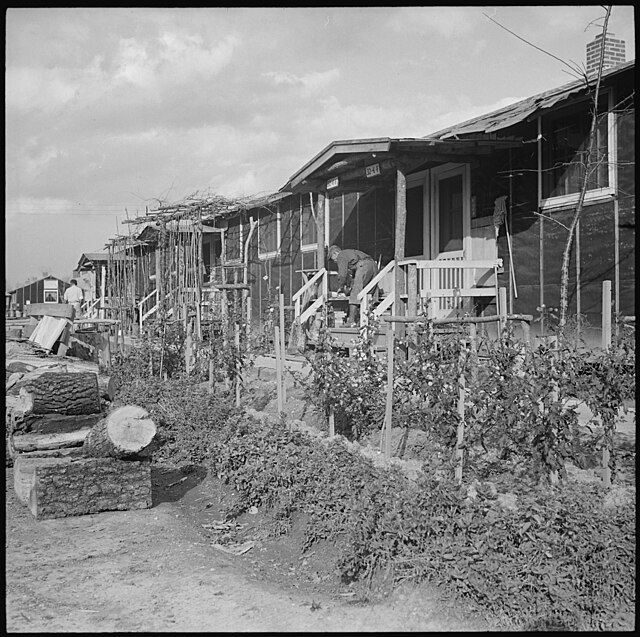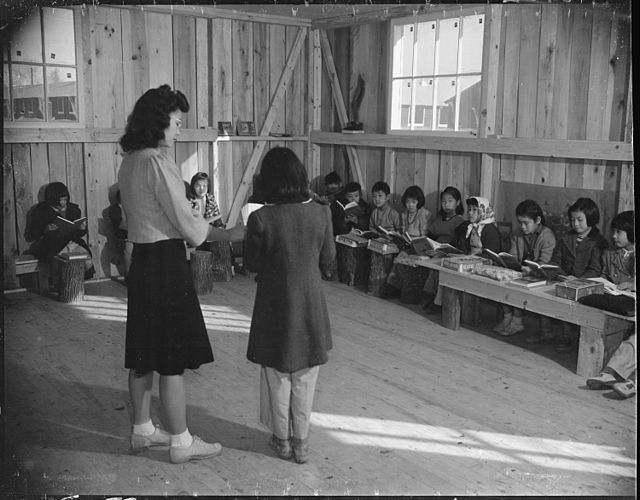The Japanese American Experience
History of Japanese Immigration
Japanese immigration to the United States began in earnest in the late 19th century. Following the Meiji Restoration in 1868, Japan underwent rapid modernization, prompting many citizens to seek opportunities abroad. The first major influx of Japanese immigrants came to Hawaii and the West Coast of the US in the 1880s and 90s. They were drawn by jobs in agriculture, railroads, mining, and fishing.
As the number of Asian immigrants grew, a series of US immigration laws and sometimes successful challenges to them had a tremendous impact on their lives, including those from Japan.
- The Chinese Exclusion Act of 1882 banned all immigration of Chinese laborers for 10 years, setting the precedent for Asian exclusion.
- US vs. Wong Kim Ark in 1898 established citizenship for children born in the US regardless of their parents' immigration or citizenship status.
- The Gentleman's Agreement of 1907 between Japan and the US halted the migration of Japanese laborers but allowed family reunification.
- The California Alien Land Law of 1913 banned land ownership by "aliens ineligible for citizenship", effectively targeting all Asian immigrants, including the Japanese. Japanese immigrants responded by placing land in the names of their American-born children or forming legal trusts, prompting more restrictive amendments in 1920.
- The Immigration Act of 1924 imposed a complete ban on immigration from Japan and other Asian nations by enforcing race-based quotas.
Roles of the Japanese Immigrants
Japanese immigrants and their American-born children (Nisei) played significant roles in the economy. In addition to their early work on railroads, they became essential to the success of agriculture on the West Coast, leasing or cultivating land and growing fruit, vegetables, and flowers. Despite laws preventing first generation immigrants (Issei) from owning land, many managed to build thriving farms and businesses.
Japanese Americans also worked as fisherman, domestic workers, shopkeepers and gardeners; and were known for being industrious, self-reliant, and tightly knit as a community. However, these successes often generated resentment from white Americans, especially during economic downturns.
Views on the Japanese Americans
Even before World War II, Japanese Americans were targets of racial prejudice and exclusionary laws. Their success in farming and business triggered envy and suspicion. Laws and court decisions consistently denied them full citizenship rights, portraying them as racially unassimilable.
After Japan's attack on Pearl Harbor on December 7th, 1941, fear of sabotage and espionage spread rapidly. Despite the lack of evidence, Japanese Americans were viewed as potential enemies. This climate of suspicion and racial scapegoating set the stage for what was about to come.
Internment
On February 19, 1942, President Franklin D. Roosevelt signed Executive Order 9066, authorizing the forced removal of Japanese Americans from designated military zones, primarily along the West Coast. This resulted in the incarceration of over 120,000 individuals of Japanese ancestry, or roughly two-thirds of all Japanese Americans.
Families were given as little as 48 hours to evacuate. They were allowed to bring only what they could carry. The consequences were devastating and had lasting effects:
- Home, farms, and businesses were abandoned or sold at a loss.
- Property was vandalised, looted, or taken over by neighbors or speculators.
Some Japanese Americans placed their belongings in storage or entrusted them to friends or churches, but much was lost forever. The long term economic impact was staggering: families that spent decades building lives and livelihoods were reduced to poverty in a matter of days.
Internees were initially sent to makeshift "assembly centers" such as racetracks and fairgrounds, before being relocated to one of ten remote War Relocation Authority (WRA) camps scattered across the interior US.
Life at Rohwer
One of these camps was the Rohwer Relocation Center in southeastern Arkansas, which operated from September 1942 to November 1945 and held nearly 8,500 internees, mostly from California.

Rohwer was surrounded by barbed wire and guard towers. The camp was located in a humid, swampy area with heavy rain and poor drainage. Internees lived in barracks made of green lumber and tar paper, poorly insulated against cold winters and the hot, muggy summers. Each family was assigned a single room with a coal-burning stove, army cots, and one bare light bulb.
Winters at Rohwer were particularly difficult. Temperatures often dropped below freezing, and many internees- unprepared and under dressed- suffered in drafty barracks with limited fuel rations. Humidity, damp floors, and inadequate insulation made warmth and comfort difficult to achieve.
Disease was a significant problem at Rohwer due to its swampy Arkansas location, overcrowded conditions, and inadequate sanitation. Early in the camp's operation, malaria posed a serious threat, especially to children and the elderly, because of the mosquito-infested environment. Internees also suffered from gastrointestinal illnesses like dysentery and diarrhea, caused by poor sanitation and contaminated water. Respiratory infections, including pneumonia and bronchitis were common in the cold, damp barracks, while skin and fungal conditions spread easily in the humid climate with limited bathing facilities. Though a camp hospital existed, it was initially under-resourced, and access to medical care remained limited throughout much of the internment period.
Still, the Japanese American community found ways to survive with dignity. They organized schools, churches, libraries, gardens, and recreational clubs. Rohwer had its own news paper, The Rohwer Outpost, and some internees worked in agriculture or took jobs within the camp.

Young men from Rohwer and other camps volunteered for the 442nd Regimental Combat Team, an all-Japanese American unit that became the most decorated military unit of its size in US history. The motto of the 442 was "Go for Broke" and its shoulder insignia, the torch from the Statue of Liberty.
Japanese American Reactions to Internment
Japanese Americans responded to internment with a complex mix of shock, grief, endurance and in some cases, resistance.
The Issei, already denied citizenship and accustomed to racism, often endured the injustice with quiet resignation, drawing on cultural values of gaman (perseverance) and shikata ga nai ("it can't be helped").
The Nisei, on the other hand, were more likely to feel betrayed and confused as they were incarcerated by their own government despite their citizenship. May tried to prove their loyalty through cooperation or military service.
Tensions rose when internees were asked to fill out a loyalty questionnaire, which included two controversial questions about willingness to serve in the US military and forswearing allegiance to the Japanese emperor. Refusal to answer or perceived disloyalty led to relocation to maximum security segregation centers like Tule Lake, where unrest and resentment ran high.
Treatment of Other Axis Immigrants
While Japanese Americans were the primary targets of mass internment, immigrants from Germany and Italy also faced scrutiny, through not at the same scale.
About 11,000 German and 3,000 Italian Americans were interned, mostly non-citizens or community leaders considered suspicious. These individuals were also arrested under the alien enemies act, held in Department of Justice camps and then released after hearings.
There was:
- No mass removal of German or Italian American communities.
- No widespread property seizure or large-scale incarceration.
The contrast reveals how race played the central role in the decision to forcibly remove and incarcerate Japanese Americans.
What Were the Consequences of Internment?
When the camps closed in 1945, Japanese Americans were given $25 and a one-way ticket to restart their lives. Many returned to find their homes gone, their farms lost, and their bank accounts closed. Some moved inland to escape the discrimination that remained on the West Coast; others slowly rebuilt what had been taken.
The economic losses were profound, and the psychological scars often went unspoken. Families that had once owned land and businesses found themselves impoverished. Older Issei rarely recovered financially, and many Nisei internalized a quiet trauma that lasted for generations.
In the 1970s, a younger generation of Japanese Americans, along with internment survivors, began to push for redress. Their activism led to public hearings, research commissions, and growing public support for acknowledgement.
In 1988, President Reagan signed the Civil Liberties Act, which offered:
- A formal apology on behalf of the US government acknowledging that the internment was not a military necessity, but the result of "race prejudice, war hysteria, and a failure of political leadership".
- $20,000 in compensation to surviving internees.
- Funding for education and public awareness.
Though symbolic, the act marked significant milestone in American history- a rare admission of systemic wrongdoing.